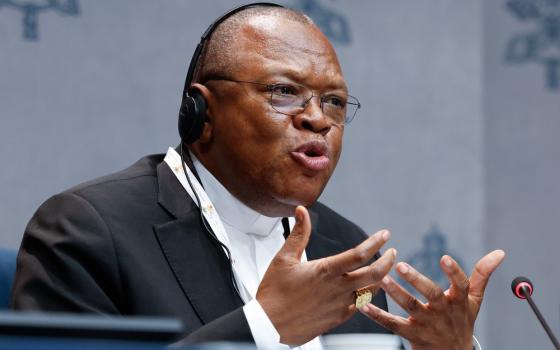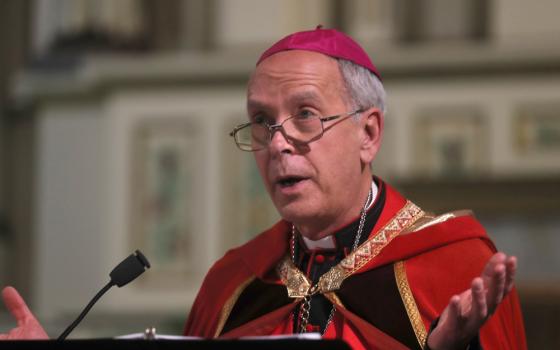
St. Mary Magdalene is shown meditating on the crucifix in this painted wooden sculpture that is part of The Sacred Made Real exhibit in 2010 at the National Galley of Art in Washington. (CNS/Nancy Wiechec)
The July 22 memorial observance of St. Mary Magdalene has elevated to a major feast in the Roman Catholic liturgical calendar, Vatican Radio announced today. Pope Francis signed the decree June 3.
“Pope Francis has taken this decision precisely in the context of the Jubilee of Mercy to highlight the relevance of this woman who showed great love for Christ and was much loved by Christ,” Archbishop Arthur Roche, secretary for the Congregation for Divine Worship, wrote in an article an article explaining the change’s significance, according to Catholic News Service.
While most liturgical celebrations of individual saints during the year are known formally as memorials, those classified as feasts are reserved for important events in Christian history and for saints of particular significance, such as the Twelve Apostles.
Roche wrote: “It is right that the liturgical celebration of this woman has the same level of feast given to the celebration of the apostles in the general Roman calendar and highlights the special mission of this woman who is an example and model for every woman in the church."
National Catholic Reporter editor Dennis Coday wrote in 2012 of the growing devotion to Mary of Magdala in recent years.
“Mary of Magdala, has been adopted as patron for Catholic reform groups, such the Cleveland-based FutureChurch, which since 1997 has been promoting the feast day as a means "to educate about women leaders and to model gender balance in scripture proclamation." According to FutureChurch, every year between 200 and 300 Magdala Day celebrations are organized around the world. Read more about it here.”
FutureChurch expressed their joy at the news today in a press release.
“Twenty years ago FutureChurch first initiated our ongoing project to restore St. Mary of Magdala to her rightful place as the ‘Apostle to the Apostles’ through education and worldwide celebrations,” said Deborah Rose-Milavec, Executive Director of FutureChurch. “It is gratifying and heartening to learn that this message is now echoing from the Vatican and that they now recognize her for her role as the primary witness to the Resurrection and a key figure in our salvation history with equal standing to her male counterparts.”
“FutureChurch is, once again, offering new resources and calling on Catholics to celebrate the Feast of St. Mary of Magdala asking Catholics to Build a Church for Our Daughters,” according to the press release. “For more information, go to futurechurch.org/MM2016.”
Pope Francis mentioned her specifically in a prayer he composed for the Year of Mercy, according to the Catholic News Service.
“Your loving gaze freed Zacchaeus and Matthew from being enslaved by money; the adulteress and Magdalene from seeking happiness only in created things; made Peter weep after his betrayal, and assured paradise to the repentant thief.”
Drawing a comparison between Eve, who "spread death where there was life," and St. Mary Magdalene, who "proclaimed life from the tomb, a place of death," the archbishop said her feast day is a lesson for all Christians to trust in Christ who is "alive and risen," according to CNS.
Rosemary Radford Ruether wrote in a 2001 article in NCR that “for the first five centuries no writer misinterpreted Mary Magdalene as a prostitute. Rather she was seen as a leading disciple and image of the church.”
Ruether said, “It is only at the end of the sixth century that Pope Gregory I confuses the sinful woman of Luke 7 and Mary Magdalene in Luke 8 and identifies her as a repentant prostitute, whose former sinfulness is contrasted with that of the Virgin Mary. But there is no evidence that he makes this mistake in order to remove her as a ‘role model’ for women’s ministry.”
“Such an idea is unknown to him,” Ruether wrote. “The misinterpretation seems to come about primarily from a rhetorical tendency to reduce the complexity of ‘Marys’ in the New Testament to a simple dualism: the ever virgin mother and the repentant sinner.”

